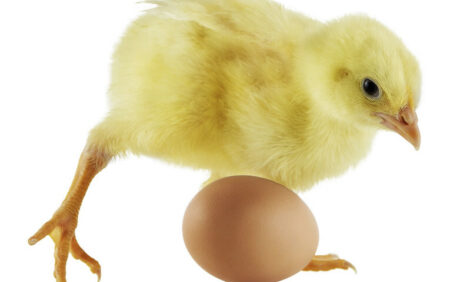



Drought in Australia: What is the Cost?
AUSTRALIA – Drought has held Australia’s broadacre production back 11 per cent this millennium, according to a new Australian government report.Research by the Australian Bureau of Agricultural and Resource Economics and Sciences (ABARES) has calculated that drought year losses can exceed A$5 billion in terms of gross value of agricultural production.
This was the figure given for the 2006/7 drought believed to contract economic growth in the country by 0.75 percentage points. The loss for the 1983 season was tallied at A$3 billion.
ABARES has said policy measures must provide solutions to longer heatwaves and water shortages.
This is in line with government experts predicting droughts to become more severe in the future, continuing the trend of the last half century.
The report, Australian agricultural productivity growth: Past reforms and future opportunities, coincided with another suite of federal government drought support measures to ease hardship across the country.
*
"Hundreds of wild pigs are feeding on grain provided as drought feed for sheep and competing for water."
However, the ABARES publication questioned the longer term effects of drought support on farming.
The report said: “By insulating farmers from the effects of drought, these measures discouraged self-reliance and distorted incentives to implement strategies to manage climate risk and prepare for drought.”
To address this, ABARES prescribed that future governments encourage self-resilience and preparedness in producers.
Latest Drought Relief
Last week, Australian Prime Minister Tony Abbott confirmed a A$320 million drought support package for farmers nationally, of which A$280 million was allocated as concessional loans.
- A$12 million lump will be added to already existing emergency water infrastructure schemes.
- A$10 million will go to pest management in drought affected areas
- A$10.7 million will assist social and mental health services in drought-hit regions
In a joint release with the Minister for Agriculture, Mr Abbott underlined the emotional as well as financial cost of the drought.
This was welcomed by farming groups who praised the government for responding quickly to producer pleas.
“With the extremely harsh summer and dramatic increase in the area of NSW in drought, we put a package to the federal government asking for a number of measures to be implemented immediately,” said New South Wales (NSW) President Fiona Simson.
She added: “Recent reports reveal that the drought is spreading with farmers in the Balranald area in the south west of the state also experiencing drought.”
She cautioned that the 60 per cent of NSW suffering from drought is growing every day.
NSW Farmers Rural Affairs Committee chair, Sarah Thompson, said farmers would be sheltered from interest rate burdens due to the government decision to cap loan repayments at four per cent.
The Dangers to Farming
A report from the Bureau of Meteorology (BOM) State of the Climate, released on Tuesday, has concluded that Australia is going to see more extremes of temperature.
“Seven of the 10 warmest years on record in Australia have occurred since 1998,” said Dr Rob Vertessy, BOM chief executive.
“When we compare the past 15 years to the period 1951 to1980, we find that the frequency of very warm months has increased five-fold and the frequency of very cool months has decreased by around a third.”
He underlined a trend for more intense, frequent and length heatwaves since 1950, along with wildfires.
“Extreme fire weather risk has increased,” said Dr Vertessy. “The fire season has lengthened across large parts of Australia since the 1970s.”
This has led to forage shortages for Victoria farmers who have thanked fodder support efforts for supplying over 1,600 tonnes of fodder.
Victoria Farmers Federation President Peter Tuohey publicly thanked anyone linked to the fodder effort last week.
In New South Wales however, wild boar have been reportedly accessing emergency fodder rations.
Describing a ‘disturbing picture’ of the event, NSW speaker Sarah Thompson said: “Hundreds of wild pigs are feeding on grain provided as drought feed for sheep and competing for water.”
She welcomed the drought support scheme but added: “One of the problems we have at the state level is that some areas are given access to support and others miss out. This is perplexing for farmers and adds to their stress during an already stressful time.”
The ABARES report said that government fodder interventions have the added benefit of boosting allied industries such as hauliers and feeds companies when forage is expensive.
Importance of Irrigation
Water resources, farm land, labour, other capital and the free movement between farms therein is key for future farm productivity growth, said ABARES.
In 2010/11, irrigated agriculture used less than one per cent of Australia’s agricultural land but made up 30 per cent of the gross value of production.
This, the report added, was mostly linked to vegetables, fruit and dairy farming, much of which occurs in the south eastern Murray-Darling basin.
Irrigation’s rise, the report added, was assisted by national water schemes agreed in 1994, then complemented by new acts in 2004 and 2007.
Reallocation of water between farms was underlined as something to support productivity.
ABARES said: “Resource reallocation — whether through structural adjustment or, more generally, resources moving between farms — is an important productivity driver at an industry level.”
“Governments can promote productivity growth by ensuring policy settings do not impede 'normal' structural adjustment within agriculture, including exits by inefficient farm businesses.”
However, ABARES added: “In Australia, drought and rural assistance programmess have tended to hamper, rather than facilitate, structural adjustment.”









